Order Passeriformes Higher classification Lichenostomus | Phylum Chordata Family Meliphagidae Scientific name Lichenostomus melanops Rank Species | |
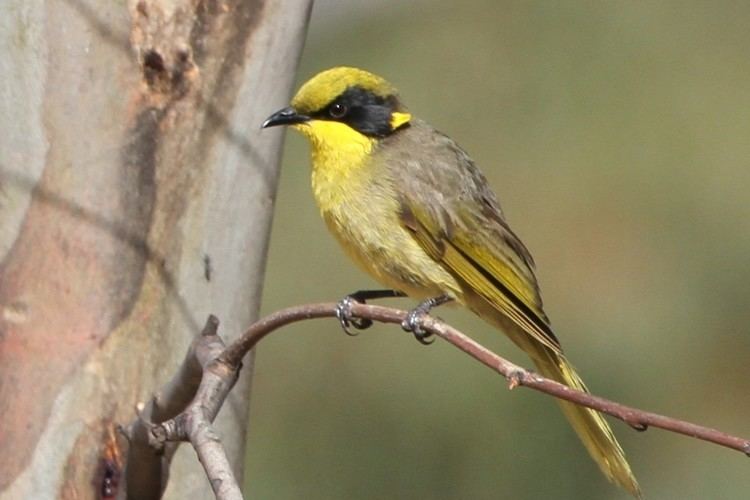 | ||
Similar Honeyeater, Lichenostomus, Bird, Fuscous honeyeater, Brown‑headed honeyeater | ||
Yellow tufted honeyeater bird watching in australia with ej birdwatching
The yellow-tufted honeyeater (Lichenostomus melanops) is a passerine bird found in the south-east ranges of Australia from south-east Queensland through eastern New South Wales and across Victoria into the tip of Southeastern South Australia. A predominantly black and yellow honeyeater, it is split into three subspecies.
Contents
- Yellow tufted honeyeater bird watching in australia with ej birdwatching
- Taxonomy
- Subspecies
- Description
- Distribution and habitat
- Diet
- Breeding
- Status
- References
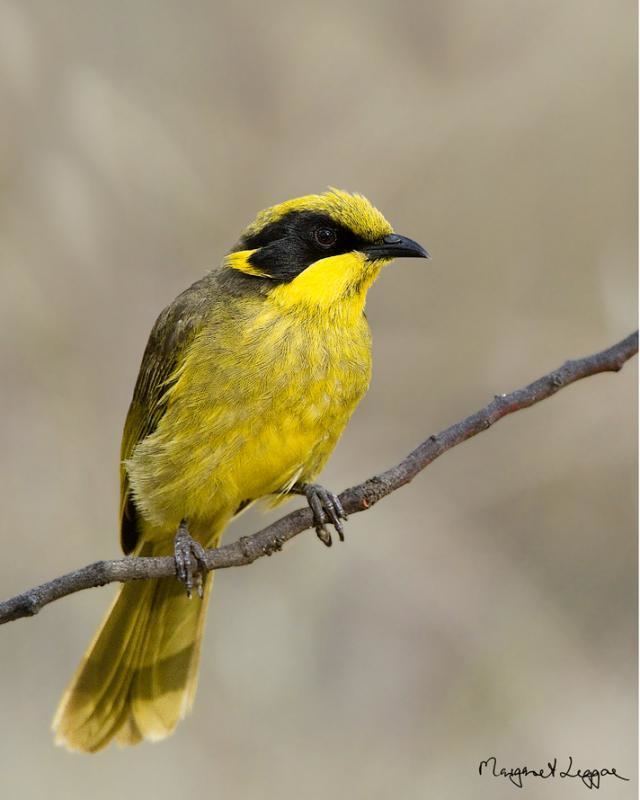
Yellow tufted honeyeater bird watching in australia with ej birdwatching
Taxonomy
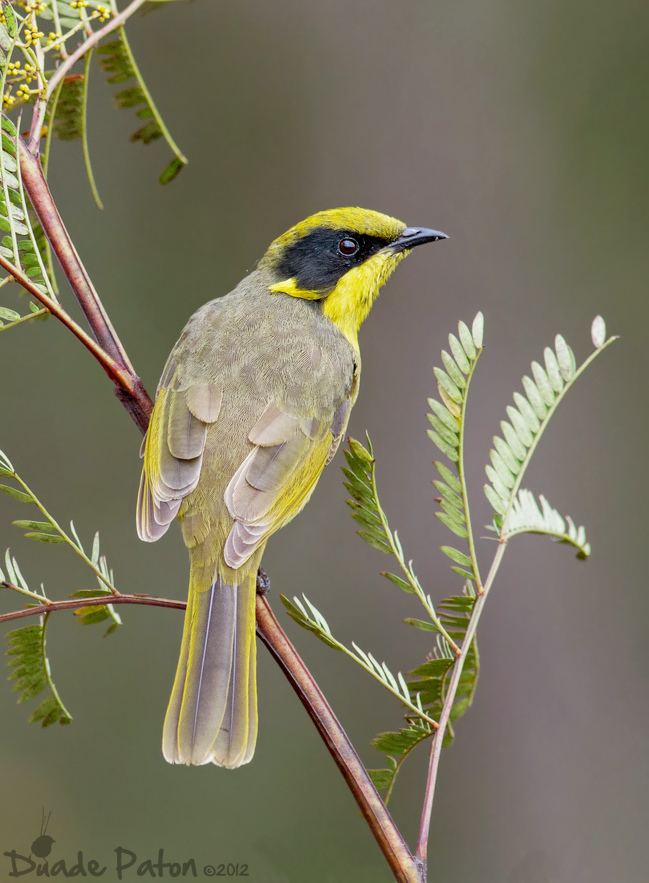
The yellow-tufted honeyeater was first described by the English ornithologist John Latham in 1801 and given two different binomial names: Muscicapa auricomis and Turdus melanops. The latter name was retained as a nomen protectum and the former a nomen oblitum as the epithet melanops has been used consistently for over a century. It belongs to the honeyeater family Meliphagidae. More recently, DNA analysis has shown honeyeaters to be related to the Pardalotidae, and the Petroicidae (Australian robins) in a large corvid superfamily; some researchers considering all these families in a broadly defined Corvidae.
Subspecies
Four races are recognised:
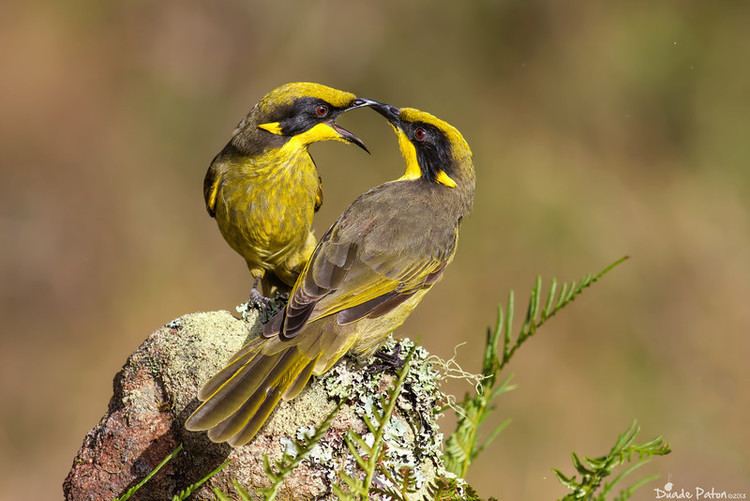
Description
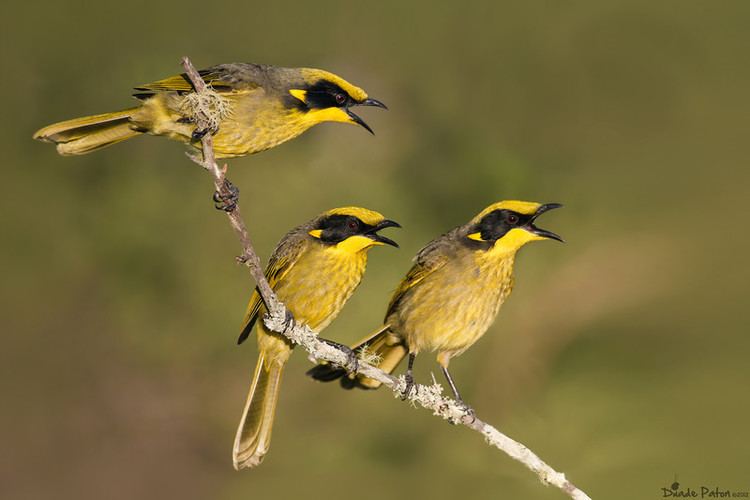
It is 17–23 cm long, with females usually smaller, and has a bright yellow forehead, crown and throat, a black mask and a yellow ear and forehead tuft. The back is olive-green and underparts more olive-yellow.
Distribution and habitat
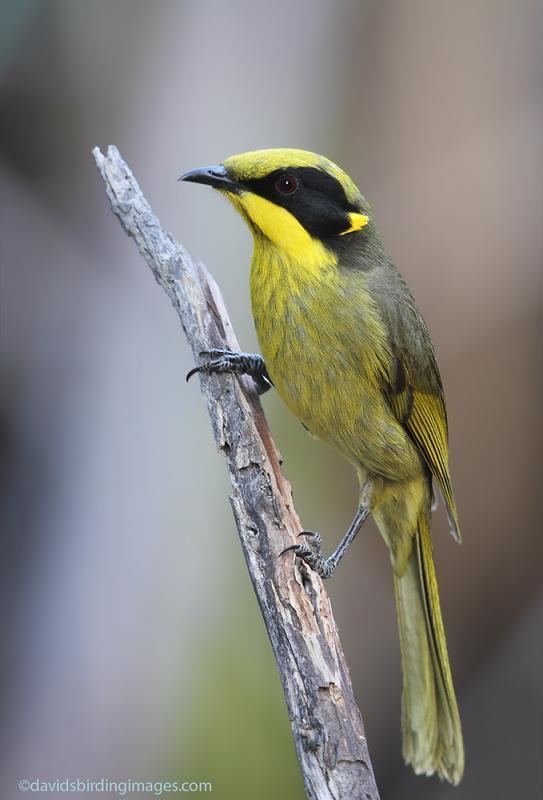
The helmeted honeyeater subspecies is largely restricted to dense vegetation along riverbanks, dominated by the mountain swamp gum (Eucalyptus camphora) with a dense understorey of sedges and tussock grasses.
Diet
Food includes lerps and other invertebrates, as well as nectar from eucalypts and other flowers.
Breeding
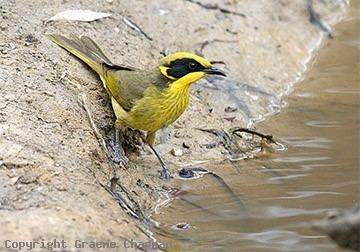
Breeding takes place between July and January, with one or two broods each season. The nest is a cup-shaped structure of dried grasses, bits of bark and other plant material usually in a fork of a tree 3–4 m (9.8–13.1 ft) above the ground. Two or three eggs are laid, pinkish in colour blotched with pale reddish- or buff-brown.
Status
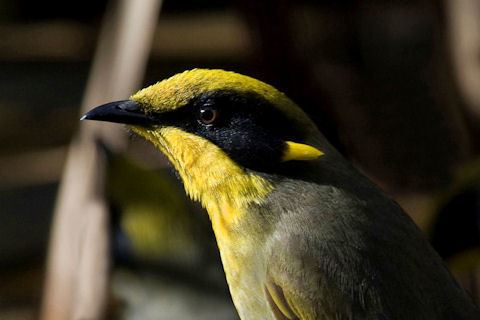
Yellow-tufted honeyeaters, as a species, are not listed as threatened on the Australian Environment Protection and Biodiversity Conservation Act 1999 or on any state-based legislation. However, at the subspecies level, the helmeted honeyeater (L. m. cassidix) is considered to be a threatened species:
